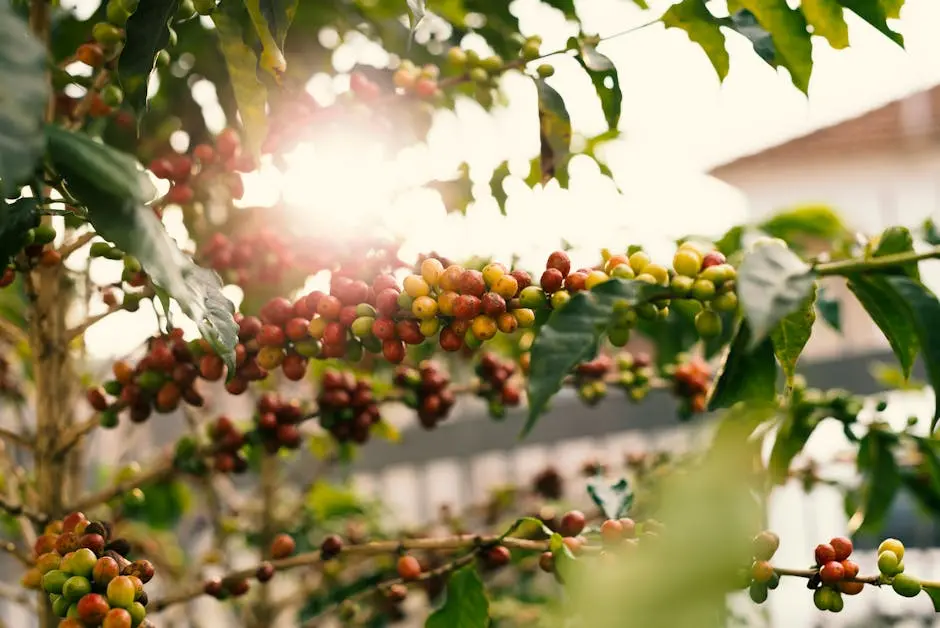What Is the Difference Between Single Origin and Blended Coffee Beans?
Coffee lovers often come across terms like 'single origin' and 'blended' when exploring different coffee options. Understanding the distinction between these two can enhance your coffee experience and help you make more informed choices. Let's delve into what differentiates single origin coffee beans from blended ones.
What Are Single Origin Coffee Beans?
Single origin coffee beans are sourced from a specific location or region. This could be a single farm, a collective of farms, or a specific geographical area. The unique characteristics of beans from this single origin often reflect the terroir and climate of the region, providing distinct flavor profiles.
Exploring single origin coffees is like taking a journey through the world's coffee-growing landscapes. For instance, a bean from Ethiopia might offer floral and citrusy notes, whereas a Colombian bean could provide a rich, chocolatey experience. This variety allows coffee lovers to appreciate the ___ of flavors each region imparts.
For those interested in supporting sustainable practices, opting for single origin coffee can often mean contributing to ethical trade practices and helping smaller farms thrive. This choice boosts transparency and traceability in the coffee supply chain, making every cup of coffee more meaningful.
What Are Blended Coffee Beans?
Blended coffee beans, on the other hand, are a mix of beans from various origins. The goal of creating a coffee blend is to achieve a balanced and consistent flavor by combining beans with different characteristics. This can result in a more rounded taste profile, often making them popular choices for espresso.
Blends are particularly crafted to create a unique flavor profile that can't be found in single origin coffees. Think of it as an artwork where each type of bean is a different color on the palette, combining to form a vibrant masterpiece. This is why blended coffee is often preferred for specialized coffee drinks such as cappuccinos and lattes, where consistency is key.
Creating a blend gives roasters the opportunity to innovate and experiment with different types of beans, methods, and roasting profiles. Such diversity in preparation leads to a product that is designed to cater to various palate preferences and offers flexible brewing choices.
Flavor Profiles: Single Origin vs. Blended
Single origin coffees tend to have bold, distinctive flavors that highlight the nuances of their specific region. In contrast, blended coffees offer a complex and harmonious flavor, as they combine different notes from various beans to create a well-rounded experience.
When you savor a cup of single origin coffee, it's akin to tasting the unique signature of its birthplace. With blends, however, you're enjoying a harmonious symphony of flavors, carefully curated to provide a balanced taste. Each brings its own statement: one is like a solo performance, while the other is a complete orchestra.
Taste is a complex affair, and exploring the breadth of what coffee has to offer can be an exciting endeavor. Some coffee drinkers prefer the adventure of tasting different single origins, while others may lean towards the consistency and harmony of blends. The flavor experience can truly vary significantly depending on the bean choice.
Benefits of Choosing Single Origin Coffee
Choosing single origin coffee beans allows coffee enthusiasts to explore and appreciate unique and rich flavors. It also provides insight into a specific region’s coffee-growing practices and can support more sustainable and ethical practices by showcasing smaller producers.
Single origin coffee isn't just about taste; it's also about journeying through the world without leaving your home. When you opt for these beans, you're not only experiencing the coffee itself but also gaining insight into its origins. This connection creates a sense of appreciation for the art of coffee cultivation across different lands.
Furthermore, knowing where your coffee comes from can enhance trust in the product and provide peace of mind regarding its production standards. With single origin coffee, transparency is a core feature that ensures consumers are well-informed about their coffee’s journey from farm to cup.
Advantages of Blended Coffee Beans
Blended coffee offers a consistent flavor profile and provides balance in taste, which can be particularly appealing to those who enjoy a familiar and smooth cup. Blends are also highly versatile, often used to create different brewing methods, especially espresso.
For many, the joy of drinking blended coffee lies in its predictability and consistency. You know that each cup will taste just right, day after day, which can be a comforting experience for daily coffee drinkers. This stability in flavor is largely why coffeehouses frequently turn to blends for their daily offerings.
Additionally, blends provide roasters with a canvas to express their creativity, allowing them to perfect a mixture that can accommodate a wide range of brewing methods. By combining beans with complementary characteristics, they can create versatile products that adapt well to any brewing situation.
Understanding Your Coffee Choices
Whether you prefer the distinctive taste of single origin coffee or the harmonious flavors of a blend, there’s no right or wrong choice—it truly depends on your taste preferences and what you seek in a cup of coffee. By understanding these differences, you can select your beans with more confidence and enjoy every sip to the fullest. Discover more about our offerings by exploring our homepage.


